Snapping Turtle
- April 3, 2024
- 0 comment
The snapping turtle, scientifically known as Chelydra serpentina, is a remarkable reptile native to North America, renowned for its distinctive appearance and powerful jaws. These fascinating creatures are characterized by their rugged shell and large, beak-like mouths, which they use to catch prey with lightning speed. Snapping turtles inhabit various aquatic habitats, including ponds, lakes, marshes, and slow-moving rivers, across a wide range from Canada to parts of Mexico. As opportunistic feeders, their diet consists of fish, amphibians, insects, and even small mammals, and they employ an ambush hunting technique to capture their prey.
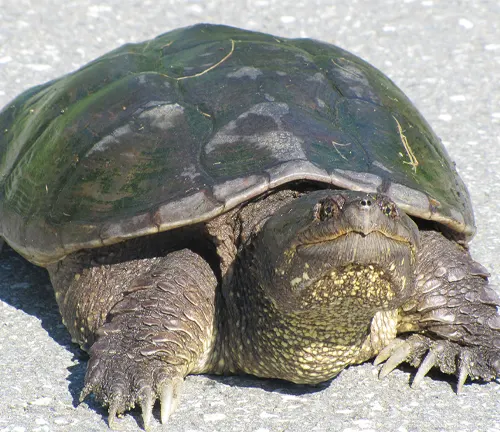
During the mating season, male snapping turtles engage in elaborate courtship displays to attract females, and mating occurs in the water, followed by nesting in sandy or gravelly areas. Despite their aggressive reputation, snapping turtles are generally solitary creatures, spending much of their time submerged in water, and they play a vital role in maintaining the health and balance of aquatic ecosystems as scavengers. While they face threats from habitat destruction and human activities, efforts to conserve these fascinating reptiles are crucial for their long-term survival.
| Specification | Description |
|---|---|
| Scientific Name | Chelydra serpentina |
| Common Name | Snapping Turtle |
| Habitat | Aquatic environments including ponds, lakes, marshes, and slow-moving rivers |
| Distribution | North America, ranging from Canada to parts of Mexico |
| Diet | Fish, amphibians, insects, small mammals, carrion |
| Physical Features | Rugged shell, serrated edges, large head with powerful jaws |
| Reproduction | Mating occurs in water, nesting in sandy or gravelly areas |
| Behavior | Generally solitary, ambush hunters, spend much of their time submerged in water |
| Lifespan | Can live several decades, with some individuals reaching over 100 years of age |
| Conservation Status | Listed as a species of least concern on the IUCN Red List, but face threats from habitat destruction and human activities |
Snapping Turtles
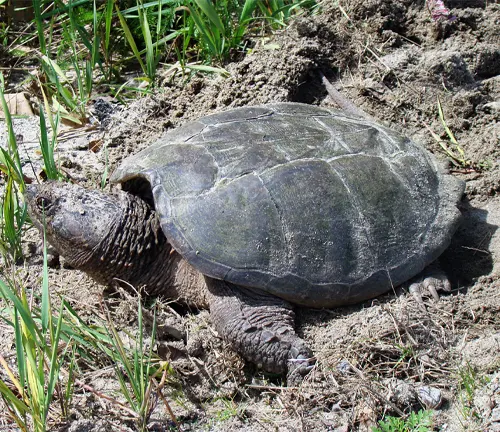
Snapping turtles, scientifically known as Chelydra serpentina, are fascinating reptiles native to North America. Known for their unique appearance and formidable snapping jaws, these creatures have intrigued scientists and nature enthusiasts for centuries.
Physical Characteristics
Shell
The shell of a snapping turtle, also known as the carapace, is a vital part of its anatomy, serving as a protective covering for its body. It is characterized by its rugged texture and pronounced keels or ridges along its surface, which provide structural support and protection against predators. The shell is composed of bone covered by a layer of keratin, the same material found in human fingernails, which gives it its tough and durable properties. Snapping turtle shells vary in coloration, ranging from dark brown to olive green, often with irregular patterns or markings that help camouflage them in their natural habitats.
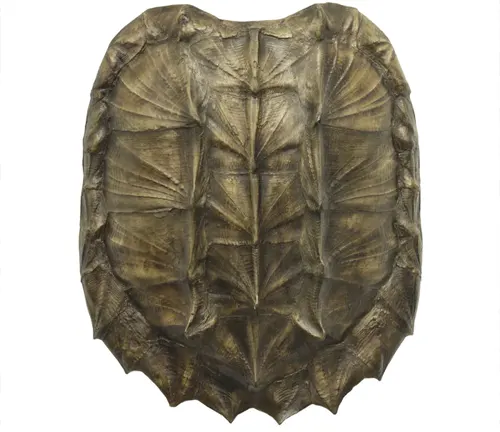
The shell is divided into two main sections: the upper carapace and the lower plastron, connected by a bridge of bone and cartilage. As snapping turtles grow, they periodically shed and replace their outer layer of scutes, allowing the shell to expand and accommodate their increasing size.

Head
The head of a snapping turtle is one of its most distinctive features, characterized by its large size and powerful jaws. The head is connected to the body by a thick, muscular neck, allowing the turtle to extend and retract its head with remarkable agility. The jaws of a snapping turtle are well-adapted for capturing and consuming prey, featuring sharp, pointed beaks with serrated edges that can deliver a powerful bite. Despite their intimidating appearance, snapping turtles have relatively small eyes and nostrils, positioned on the top of their heads, which allow them to remain partially submerged while observing their surroundings.
The skin on the head is typically rough and textured, providing additional protection against abrasions and injuries. Snapping turtles are capable of retracting their heads fully into their shells for defense, using their strong neck muscles to withdraw rapidly when threatened.
Habitat and Distribution


Snapping turtles are primarily found in freshwater habitats across North America, ranging from Canada to parts of Mexico. They inhabit a variety of aquatic environments, including ponds, lakes, marshes, swamps, and slow-moving rivers. These adaptable reptiles are also known to occupy brackish water habitats, such as estuaries and coastal marshes, although they are more commonly associated with freshwater ecosystems.
In their natural habitat, snapping turtles prefer areas with ample vegetation for cover and basking, as well as access to shallow water for foraging and nesting. They are particularly abundant in habitats with muddy bottoms or submerged vegetation, where they can burrow into the sediment and ambush prey.
The distribution of snapping turtles varies depending on factors such as climate, habitat availability, and human impacts. While they are widely distributed throughout much of their range, snapping turtle populations may be more concentrated in certain regions with suitable habitat conditions.
Despite their ability to adapt to a range of aquatic environments, snapping turtles are vulnerable to habitat loss, pollution, and human disturbances, which can negatively impact their populations. Conservation efforts focused on preserving and restoring their natural habitats are essential for ensuring the long-term survival of snapping turtles in the wild.
Diet and Feeding Behavior
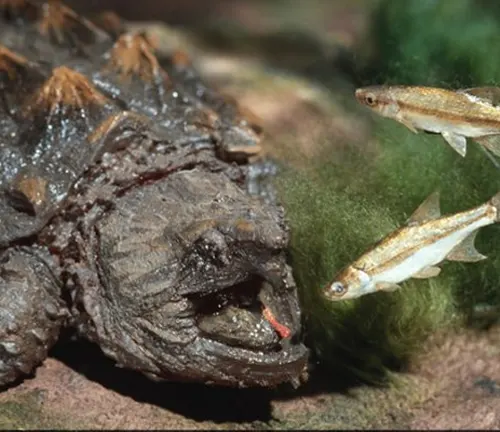
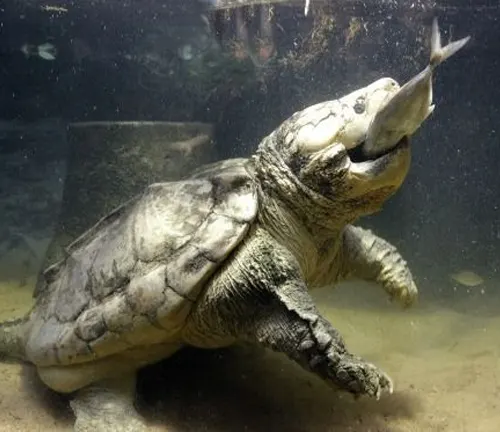
Snapping turtles are opportunistic feeders with a diverse diet that includes a wide variety of prey items. These adaptable reptiles are known to consume fish, amphibians, insects, crustaceans, mollusks, small mammals, birds, carrion, and even plant matter. Their feeding behavior is primarily carnivorous, but they may also exhibit omnivorous tendencies by consuming vegetation and fruits opportunistically.
Snapping turtles employ an ambush hunting strategy to capture prey. They are well-equipped for hunting with their powerful jaws and sharp, beak-like mouths. When hunting, snapping turtles often lie in wait partially submerged in the water, camouflaging themselves among aquatic vegetation or debris. Using their keen sense of smell and vision, they detect the movements of potential prey and strike with lightning speed, snapping their jaws shut with tremendous force to secure their meal.
One of the most remarkable aspects of snapping turtle feeding behavior is their ability to consume large prey items. They can swallow prey whole or tear it into smaller pieces using their sharp beaks and strong jaws. Snapping turtles are also opportunistic scavenging for food in their environment.
Reproduction
Mating Behavior
Mating behavior in snapping turtles is a fascinating aspect of their reproductive biology. During the breeding season, which typically occurs in the spring and early summer months, male snapping turtles become more active and engage in courtship displays to attract females. These courtship displays often involve visual and tactile cues, such as head bobbing, swimming patterns, and gentle nudging.

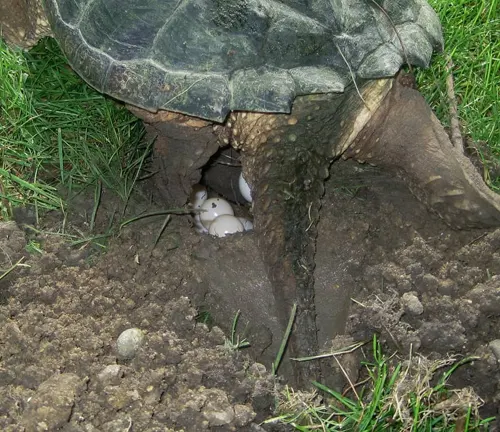
Nesting Habits
After mating, female snapping turtles seek out suitable nesting sites to lay their eggs. They are known to exhibit strong site fidelity, returning to the same nesting area year after year. Nesting typically occurs on land, where the female digs a shallow nest using her hind legs, often in sandy or gravelly areas near the water’s edge.
Once the nest is excavated, the female deposits a clutch of eggs, which can vary in number depending on factors such as age, size, and environmental conditions. Snapping turtle eggs have soft, leathery shells and are vulnerable to predation, temperature fluctuations, and moisture levels.
Life Cycle
The life cycle of snapping turtles is characterized by several distinct stages, beginning with egg incubation and hatchling emergence. Snapping turtle eggs typically undergo an incubation period of 9 to 18 weeks, during which time the embryos develop within the protective confines of the nest.
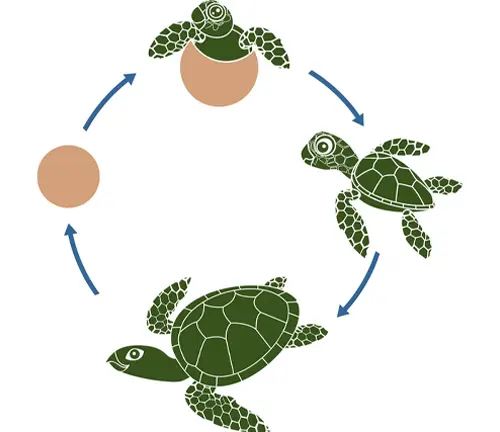
Upon hatching, young snapping turtles, known as hatchlings, emerge from their eggs and make their way to the water. This journey is perilous, as hatchlings are vulnerable to predation by birds, mammals, and other predators. Those that survive the journey face additional challenges as they adapt to their aquatic environment and navigate the complexities of survival.
Behavior and Temperament
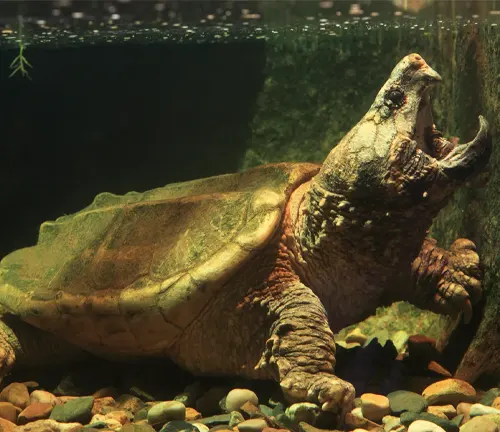
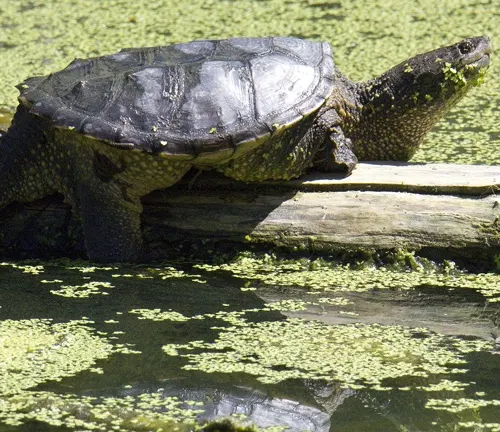
Snapping turtles are known for their distinct behavior and temperament, shaped by their evolutionary adaptations and ecological roles. While they may appear intimidating due to their large size and powerful jaws, snapping turtles generally exhibit solitary behavior and prefer to spend the majority of their time submerged in water.
Despite their solitary nature, snapping turtles may occasionally interact with other individuals, particularly during the breeding season when mating occurs. During this time, males may engage in courtship displays to attract females, while females seek out suitable nesting sites to lay their eggs.
In their natural habitat, snapping turtles are primarily active during the warmer months, when water temperatures are conducive to foraging and breeding. They are often observed basking in the sun on logs or rocks near the water’s surface, where they can regulate their body temperature and absorb essential UV radiation.
Predators and Threats
Despite their formidable size and defensive capabilities, snapping turtles are vulnerable to predation by various animals, particularly during certain stages of their life cycle. While adult snapping turtles have few natural predators due to their large size and powerful jaws, hatchlings and juveniles are more susceptible to predation.
Common predators of snapping turtle hatchlings include birds of prey such as eagles, hawks, and herons, as well as terrestrial predators like raccoons, foxes, and skunks. These predators target snapping turtle nests and newly hatched turtles as they make their way to the water, often preying on them before they reach maturity.
In addition to predation, snapping turtles face numerous threats from human activities and environmental disturbances. Habitat destruction and fragmentation, caused by urbanization, agriculture, and infrastructure development, pose significant challenges to snapping turtle populations by reducing available nesting sites and disrupting migratory pathways.
Pollution from agricultural runoff, industrial discharge, and urban runoff can also negatively impact snapping turtles, contaminating their aquatic habitats with chemicals, heavy metals, and other pollutants. These pollutants can accumulate in the turtles’ tissues, impairing their immune systems, reproductive health, and overall survival.
Conservation Status
The conservation status of snapping turtles varies depending on their geographic location and local population trends. While snapping turtles are not currently listed as globally threatened or endangered, certain subspecies or populations may face conservation concerns due to habitat loss, pollution, overexploitation, and other human-induced threats. Efforts to monitor snapping turtle populations, protect critical habitats, and mitigate human impacts are essential for ensuring the long-term survival of these iconic reptiles.
Human Interaction
Human interaction with snapping turtles can sometimes lead to conflicts or negative outcomes for both humans and turtles. Snapping turtles may be inadvertently harmed or killed by vehicles while crossing roads, captured or removed from their natural habitats for consumption or as pets, or subjected to harassment or persecution due to fear or misunderstanding. Educating the public about the importance of snapping turtles in ecosystems and promoting responsible behavior around these reptiles can help minimize negative interactions and foster coexistence.
Common Misconceptions
Several common misconceptions surround snapping turtles, often fueled by their intimidating appearance and aggressive reputation. One common misconception is that snapping turtles are inherently aggressive towards humans. While snapping turtles may defend themselves if threatened or handled improperly, they generally prefer to avoid confrontation and pose little risk to humans when left undisturbed. Additionally, snapping turtles are often perceived as harmful or dangerous predators, when in fact, they play important roles in ecosystems as scavengers and contribute to nutrient cycling and ecosystem health.
Significance in Ecosystems
Snapping turtles play significant roles in freshwater ecosystems as apex predators and scavengers. As opportunistic feeders, they help regulate populations of prey species and contribute to nutrient cycling by consuming carrion and organic matter. Snapping turtles also serve as indicators of ecosystem health, as declines in their populations may reflect broader environmental degradation or pollution in aquatic habitats. By maintaining healthy populations of snapping turtles, we can help preserve the balance and resilience of freshwater ecosystems.
Tips for Coexistence
To coexist harmoniously with snapping turtles, it’s important to respect their habitats and behavior. Here are some tips for coexisting with snapping turtles:
- Avoid disturbing nesting sites and nesting females, especially during the breeding season.
- If you encounter a snapping turtle in the wild, observe from a safe distance and avoid handling or approaching it.
- When driving near waterways, watch for snapping turtles crossing roads, particularly during the nesting season.
- Dispose of trash properly to prevent pollution of aquatic habitats and reduce the risk of entanglement or ingestion by snapping turtles.
- Support conservation efforts and habitat restoration projects aimed at protecting snapping turtles and their habitats.
Different Species
Common Snapping Turtle
(Chelydra serpentina serpentina)
This subspecies is the most widespread and commonly known snapping turtle, found throughout much of North America.
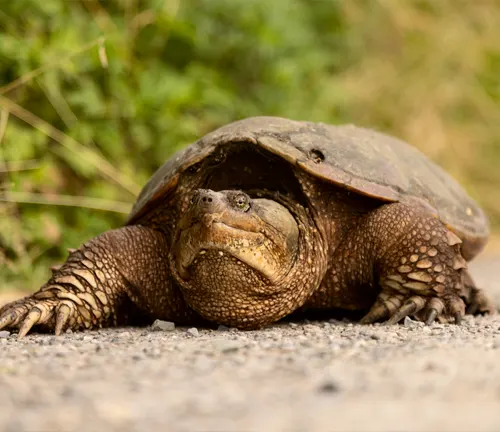
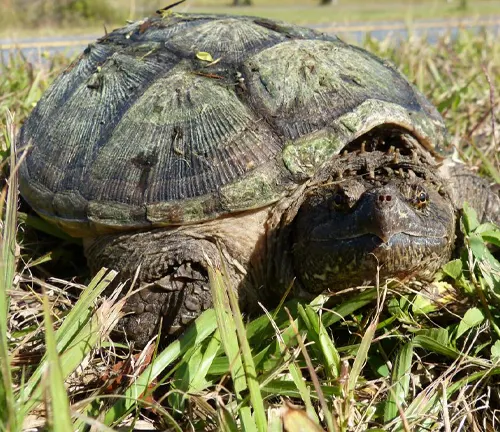
Florida Snapping Turtle
(Chelydra serpentina osceola)
Native to the southeastern United States, particularly Florida, this subspecies is smaller in size compared to other snapping turtles.
Mexican Snapping Turtle
(Chelydra serpentina rossignonii)
Found in Mexico, particularly in freshwater habitats such as lakes, rivers, and ponds, this subspecies has distinct markings and coloration.
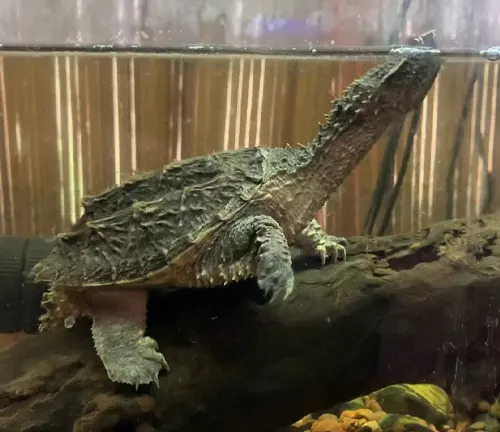

Texas Snapping Turtle
(Chelydra serpentina acutirostris)
Endemic to Texas and neighboring states, this subspecies is characterized by its relatively narrow snout and unique color patterns.
Eastern Snapping Turtle
(Chelydra serpentina serpentina)
This subspecies is found in the eastern United States and is known for its robust build and aggressive behavior.

Frequently Asked Questions (FAQs)
- What do snapping turtles eat?
Snapping turtles are opportunistic feeders and consume a variety of prey, including fish, amphibians, insects, small mammals, and carrion. - How big can snapping turtles get?
Snapping turtles can reach impressive sizes, with adults typically measuring between 8 to 14 inches in shell length, although some individuals can grow even larger. - Do snapping turtles hibernate?
Yes, snapping turtles are known to hibernate during the winter months. They often bury themselves in mud at the bottom of bodies of water to survive the colder temperatures. - Can snapping turtles be aggressive towards other animals?
Snapping turtles are generally solitary creatures and may exhibit aggressive behavior towards other animals, particularly when defending their territory or during mating season. - How do snapping turtles defend themselves?
Snapping turtles have several defense mechanisms, including their powerful jaws and sharp claws. They may also emit musky odors or release waste as a deterrent. - Are snapping turtles legal to keep as pets?
Laws regarding the ownership of snapping turtles vary by region, but in many places, they are not legal to keep as pets due to their aggressive nature and specialized care requirements. - What is the difference between alligator snapping turtles and common snapping turtles?
Alligator snapping turtles (Macrochelys temminckii) are a distinct species from common snapping turtles (Chelydra serpentina). Alligator snapping turtles are larger and have a more pronounced, ridged shell, while common snapping turtles have a smoother shell and are typically smaller in size. - Do snapping turtles migrate?
Snapping turtles are not known for long-distance migrations, but they may move between different habitats within their range in search of food, mates, or suitable nesting sites. - Can snapping turtles be found in saltwater environments?
Snapping turtles are primarily freshwater turtles and are rarely found in saltwater environments. They prefer freshwater habitats such as ponds, lakes, rivers, and marshes. - Do snapping turtles have any natural predators?
While snapping turtles have few natural predators due to their size and defensive capabilities, they may occasionally fall prey to large birds of prey, raccoons, or other predators when they are young or vulnerable.


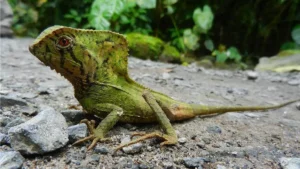
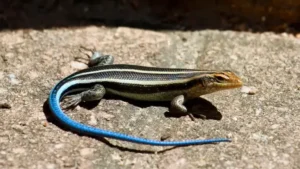
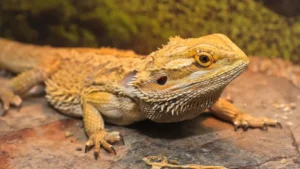

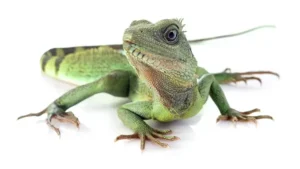

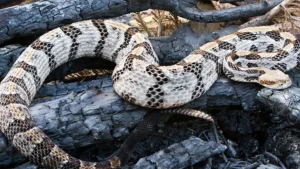
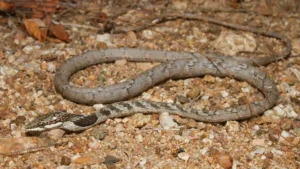
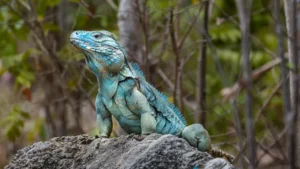

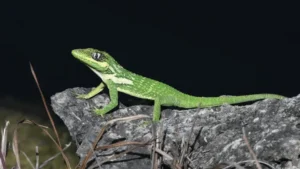
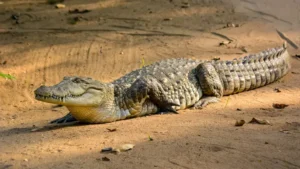
Leave your comment